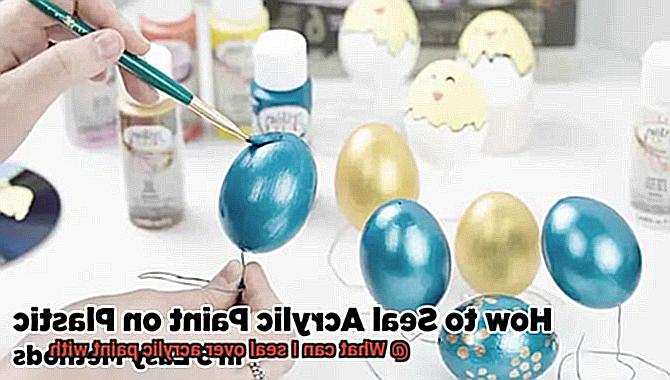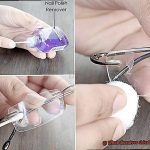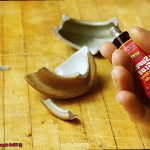Whether you choose the traditional varnish or opt for the convenience of a spray sealer, remember to apply thin, even coats and allow each layer to dry completely. Take into account the level of protection, application process, and desired finish when making your decision.
So, my fellow artists, fear not. With the right sealing technique, your acrylic paintings will remain vibrant and protected for years to come.
Now go forth and seal your masterpieces with confidence.
What is Acrylic Paint?
Contents

Acrylic paint is a dynamic and captivating medium used by artists, hobbyists, and professionals to create stunning works of art. Made from a blend of pigments and acrylic polymer emulsion, acrylic paint possesses unique qualities that set it apart.
One remarkable aspect of acrylic paint is its rapid drying time. Unlike oil paints, which may take days or weeks to dry, acrylic paint dries swiftly, often within minutes or hours. This allows artists to work with greater efficiency, making changes or adding layers without long waiting periods.
Another notable feature of acrylic paint is its extensive range of vibrant colors. With a plethora of hues, shades, and finishes available, artists have an endless palette at their disposal. Whether seeking bold and vivid tones or subtle pastels, acrylic paint offers limitless possibilities for creative expression.
Acrylic paint also boasts excellent adhesive properties, allowing it to adhere to a wide variety of surfaces. Canvas, paper, wood, metal, plastic—the options are nearly boundless. This versatility makes acrylic paint a favored choice for artists working in diverse mediums and styles.
Durability is yet another advantage of acrylic paint. Once dried, it forms a resilient and flexible film resistant to cracking or flaking. This makes it suitable for artwork exposed to handling or transportation.
Furthermore, acrylic paint can be thinned with water or mixed with acrylic mediums to achieve different effects. Diluting the paint with water creates translucent washes or glazes, while incorporating mediums such as gels or modeling pastes adds texture and dimension to the artwork.
Types of Sealants for Acrylic Paint
When it comes to protecting and enhancing your acrylic paint artwork, there are several types of sealants you can use. Each one offers unique benefits and finishes, allowing you to choose the perfect sealant for your desired outcome. Let’s explore some of the options available.
Varnish
One of the most common sealants is varnish. Varnishes come in different finishes, such as glossy, satin, and matte. They provide a protective layer over the acrylic paint, preventing it from getting damaged or fading over time. You can apply varnish using a brush or spray, depending on your personal preference. Gloss varnish adds a shiny and reflective surface, while matte varnish gives a more subdued and non-reflective look. Satin varnish falls between the two, offering a slight sheen without being too glossy.
Clear Acrylic Medium
Another popular option is using a clear acrylic medium as a sealant. These mediums are mixed with water and applied over the dried acrylic paint. They provide a clear, protective layer without altering the appearance of the paint. Clear acrylic mediums are available in various finishes, including glossy and matte. They not only seal the paint but also enhance its color and texture.
Spray Sealants
For convenience and even application, spray sealants are an excellent choice. They come in aerosol cans and can be easily sprayed onto the surface of the acrylic paint. Just like varnishes, spray sealants are available in different finishes, allowing artists to choose the desired level of glossiness or matte appearance.
Resin
If you’re looking for a more advanced sealant option, resin is worth considering. Resin is a two-part epoxy that creates a thick, glossy layer over the painted surface. It provides excellent protection and enhances the vibrancy of the colors. However, it requires careful application and curing time. Resin is often used on surfaces that will be exposed to heavy wear and tear, such as tabletops or jewelry.
Wax
Some artists opt for using wax as a sealant for their acrylic paintings. Wax can be applied with a soft cloth or brush and buffed to create a smooth, protective layer. It adds a subtle sheen to the painted surface and helps protect against dirt and moisture.
When choosing a sealant, it’s important to consider the specific needs of your artwork, such as its intended use and the level of protection required. It’s also essential to read the instructions and test a small area before applying any sealant to an entire artwork.
Varnish
Varnish is a versatile and popular choice for sealing acrylic paint due to its durability and protective properties. It not only shields the painting from dirt, moisture, and damaging UV rays but also enhances the vibrancy and color of the acrylic paint, giving it a polished and professional finish. There are different types of varnish available, each with its own advantages and considerations.
- Acrylic Varnish: This type of varnish is specifically formulated for use with acrylic paints. It provides a clear, glossy finish that adds depth and luster to the painting. Acrylic varnish is fast-drying and easy to apply, making it a convenient option for artists.
- Polyurethane Varnish: If you’re looking for a durable and long-lasting sealant, polyurethane varnish is an excellent choice. It offers excellent protection against moisture, UV rays, and general wear and tear. Polyurethane varnish is available in both glossy and matte finishes, allowing you to choose the desired effect for your artwork.
- Oil-Based Varnish: Oil-based varnish is known for its rich, amber hue that can add warmth to the acrylic painting. While it takes a longer time to dry compared to other types of varnishes, it offers superior protection. This type of varnish is often used for traditional oil paintings but can also be used on acrylic paintings.
When applying varnish over acrylic paint, it’s crucial to ensure that the paint is completely dry. Waiting at least 24 hours after the final layer of paint is recommended to avoid any potential issues. Before applying varnish, gently clean the surface of the painting to remove any dust or debris using a soft brush or cloth.
Varnish can be applied using a brush or sprayed onto the painting. It’s essential to follow the manufacturer’s instructions for application and drying times to achieve the best results. Multiple layers of varnish can be applied for added protection and depth, with sanding between layers helping to achieve a smooth surface.
While varnish provides excellent protection, it’s important to handle varnished paintings with care. They can still be susceptible to scratches and damage, so avoid placing heavy objects or applying pressure on the surface.

If desired, varnish can be removed from an acrylic painting using appropriate solvents. However, caution must be exercised to avoid damaging the underlying paint layers. It’s always recommended to consult a professional if you’re unsure about the removal process.
Clear Acrylic Mediums
Clear acrylic mediums are versatile additives that can be mixed with acrylic paint to achieve various effects and finishes. They act as sealants, providing a protective layer over the painted surface, and can modify the consistency, texture, and drying time of acrylic paint.
When it comes to clear acrylic mediums, there are different types available, each with its own unique properties and uses. Let’s take a look at some of the most common ones:
- Gloss medium: This medium is perfect for artists who want a high sheen and glossy finish. It enhances color vibrancy and gives a polished look to the painting.
- Matte medium: If you prefer a non-reflective and subdued appearance, matte medium is the way to go. It offers a matte finish that reduces glare and reflections, making it great for artworks displayed under bright lighting conditions.
- Satin medium: Falling between gloss and matte mediums, satin medium provides a soft, satin-like finish. It strikes a balance between enhancing colors and reducing glare.
But that’s not all. There are also specialized clear acrylic mediums available. For instance, there are UV-protective mediums that help prevent fading caused by sunlight exposure. These are perfect for outdoor artworks or paintings displayed in brightly lit areas.
To ensure the best results when using clear acrylic mediums as sealants, make sure to follow the manufacturer’s instructions carefully. Apply multiple thin layers instead of one thick layer to achieve even coverage and avoid cracking or bubbling. And don’t forget to let the acrylic paint dry completely before applying the medium to prevent any smudging or streaking.
Spray Sealants
Spray sealants, a popular choice for sealing acrylic paint, offer a convenient and efficient method of application. With their aerosol cans and easy-to-use spray nozzles, these sealants provide artists with numerous advantages.
Firstly, their ease of use eliminates the need for brushes or other tools, making the process quick and hassle-free. Additionally, the spray nozzle ensures an even distribution of the sealant over the painted surface, resulting in a smooth and consistent finish.
One of the great benefits of spray sealants is the variety of finishes they offer. Artists can choose from matte, satin, or gloss options to achieve the desired look for their artwork. This versatility allows for creative expression and customization.
Another important feature of some spray sealants is their formulation with UV protection. This protection helps prevent the fading and yellowing of paint over time when exposed to sunlight. By using a sealant with UV protection, artists can ensure that their artwork remains vibrant and intact for years to come.
To effectively use spray sealants, there are several essential steps to follow. Firstly, it is crucial to ensure that the acrylic paint is fully dry before applying the sealant. This typically takes around 24 hours, but it’s always best to refer to the manufacturer’s recommendations.
Before spraying, shake the can well to ensure proper mixing of the sealant. Holding the can at a distance from the surface, typically around 8-12 inches, helps achieve an even coating. It is recommended to apply multiple thin layers of sealant rather than one thick layer, as this helps avoid drips or uneven coverage.
After applying the spray sealant, allow it to dry completely before handling or displaying the artwork. Drying times may vary depending on the specific product used, so it’s essential to refer to the manufacturer’s instructions.
Lastly, it is worth noting that spray sealants may have a strong odor. To ensure safety and comfort, it is advisable to work in a well-ventilated area or wear a mask for protection.
Resin
Resin, the go-to choice for sealing acrylic paint, is more than just a protective layer. It’s a versatile solution that offers durability and a glossy finish, taking your artwork to new heights. Here’s what you need to know about resin and its advantages:
Advantages:
- Durability: Resin acts as a formidable shield against scratches, dust, moisture, and even the relentless assault of UV rays. With resin as your armor, your artwork remains vibrant and protected for years to come.
- Glossy Finish: Prepare to be mesmerized by the captivating shine that resin brings to your masterpiece. The glossy surface not only enhances the colors but also adds depth and professionalism to your painting.
- Versatility: Resin comes in various types, each with its own unique properties. Epoxy resin, known for its high gloss finish and adhesive prowess, is perfect for artworks, tabletops, and jewelry. Meanwhile, polyurethane resin offers flexibility and durability, making it ideal for outdoor applications.
But before you dive into the world of resin-sealed art, there are a few considerations you should keep in mind:
Considerations:

- Drying Time: Patience is key when it comes to applying resin. Ensure that your acrylic paint is bone dry before adding resin to the mix. Give it approximately 24 hours to set, but remember that drying times may vary depending on the brand and paint thickness. Rushing this step may result in unsightly clouds or bubbles.
- Mixing and Application: Resin requires a precise concoction of resin and hardener, following the manufacturer’s instructions to achieve the perfect blend. Stirring with determination ensures those pesky air bubbles are banished. When applying resin, embark on your artistic journey from the painting’s center and gradually work outward for even coverage.
- Curing Time and Environment: Once you’ve applied resin like a master craftsman, it’s time for the magic to happen. The curing process varies depending on the resin type and can range from a few hours to several days. During this period, guard your artwork in a dust-free sanctuary to prevent any unwanted particles from settling on its precious surface.
- Safety Precautions: As with any powerful tool, resin demands caution. Work in a well-ventilated space, adorned with protective gloves and a mask to ward off harmful fumes and skin contact. Follow the manufacturer’s instructions diligently for safe and satisfying results.
- Yellowing: While resin protects your artwork from many threats, it may succumb to the relentless grasp of time. Overexposure to sunlight can cause resin to yellow over the years. Combat this aging process by opting for UV-resistant resin or displaying your art away from direct sunlight.
Specialized Sealants
These sealants are specifically designed to provide a durable and long-lasting finish, ensuring that your artwork remains protected for years to come.
One popular type of specialized sealant for acrylic paint is a clear acrylic varnish. This versatile varnish comes in different finishes, such as gloss, satin, or matte, allowing artists to choose the desired final look of their artwork. Not only does it shield your masterpiece from dust, moisture, and UV rays, but it also enhances the colors and provides a professional-looking finish. With a clear acrylic varnish, you can unleash your creativity while maintaining the integrity of your artwork.
If you’re looking to add depth and dimension to your acrylic paintings, clear epoxy resin is the perfect option. This two-part system creates a chemical reaction when mixed together, resulting in a hard and glossy finish. Epoxy resin not only protects the paint but also adds a stunning visual effect that can truly elevate your piece. With its lustrous shine, your artwork will captivate viewers and leave a lasting impression.
For those seeking convenience without compromising quality, specialized spray sealants designed for acrylic paint are a game-changer. These sealants come in aerosol cans and provide an even and consistent application over the painted surface. Not only do they dry quickly, but they also offer protection against fading, cracking, and yellowing. With spray sealants, you can achieve professional results with ease.
When using specialized sealants, it’s crucial to follow the manufacturer’s instructions for application and drying times. Applying multiple thin coats is recommended to avoid any potential drips or unevenness in the finish. Additionally, it’s important to test the sealant on a small, inconspicuous area before applying it to the entire artwork to ensure compatibility and desired results.
Considerations Before Applying Sealant
Before applying a sealant over acrylic paint, there are several important considerations to keep in mind. These factors will help ensure the success and longevity of the sealant application, as well as protect the underlying acrylic paint.
- Compatibility: It is crucial to choose a sealant that is compatible with acrylic paint. Not all sealants are suitable for use over acrylics, as some may react negatively with the paint, causing it to crack, bubble, or discolor. It is recommended to use a sealant specifically designed for acrylic paint to avoid any potential issues.
- Surface Type: The surface on which the acrylic paint has been applied also plays a role in determining the appropriate sealant. Different surfaces, such as canvas, wood, or paper, may require different types of sealants. For example, a canvas painting may require a flexible sealant that can withstand the natural movement of the canvas, while a painting on wood may benefit from a more rigid and durable sealant.
- Purpose: Consider the purpose of applying a sealant over acrylic paint. Are you looking to enhance the color and vibrancy of the paint? Do you want to protect the artwork from UV damage or moisture? Understanding the desired outcome will help in selecting the most suitable sealant for your specific needs.
- Application Method: Depending on the type of sealant chosen, different application methods may be required. Some sealants can be brushed on like paint, while others may need to be sprayed or rolled onto the surface. It is important to carefully read and follow the instructions provided by the manufacturer to ensure proper application.
- Test Patch: Before applying a sealant over an entire artwork, it is highly recommended to perform a test patch on a small inconspicuous area. This allows you to observe how the sealant interacts with the acrylic paint and ensures that it produces the desired results. If any issues arise during the test patch, adjustments can be made before proceeding with sealing the entire artwork.
- Drying Time: Acrylic paint should be fully dry before applying a sealant. This is typically around 24-48 hours, depending on the thickness of the paint layers. Applying a sealant over wet or partially dried paint can lead to adhesion issues and may result in an uneven finish. Patience is key when it comes to sealing acrylic paint.
- Ventilation: It is important to work in a well-ventilated area when applying a sealant over acrylic paint. Some sealants emit fumes that can be harmful if inhaled in high concentrations. Open windows or use fans to ensure proper air circulation during the application process.
lOfVz8-qI6M” >
Conclusion
When it comes to sealing acrylic paint, there are several options available to ensure the longevity and protection of your artwork. One popular choice is to use a varnish specifically designed for acrylic paintings. Varnishes act as a protective barrier, shielding the paint from dirt, dust, moisture, and UV rays. They also enhance the colors and provide a glossy or matte finish depending on your preference.
Another option is to use a clear acrylic medium. This medium not only seals the paint but also adds texture and sheen to your artwork. It can be mixed directly with the paint or applied as a topcoat after the painting has dried.
If you prefer a more traditional approach, you can opt for a spray sealant. These sealants come in aerosol cans and provide an even and smooth coverage over your acrylic paint. They are quick-drying and offer excellent protection against fading, yellowing, and damage.
For those looking for an eco-friendly solution, there are water-based sealers available. These sealers are non-toxic and have low odor compared to other options. They can be brushed or sprayed onto the painted surface, providing a clear protective layer while being safe for both artists and the environment.
In conclusion, there are various options to seal acrylic paint depending on your desired finish and level of protection. Whether you choose a varnish, acrylic medium, spray sealant, or water-based sealer, each option will help preserve your artwork for years to come.






